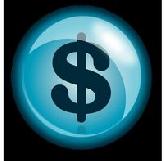
 |
|
| Financial Terms | |
| Outbound stock point |
|
Information about financial, finance, business, accounting, payroll, inventory, investment, money, inventory control, stock trading, financial advisor, tax advisor, credit.
Main Page: money, accounting, payroll, business, investment, finance, tax advisor, stock trading, Also see related: property, insurance, real estate, homebuying, condo, home financing, homebuyer, financing, mortgage, |
Definition of Outbound stock point
Outbound stock pointA designated inventory location on the shop floor between
Related Terms:Acquisition of stockA merger or consolidation in which an acquirer purchases the acquiree's stock. Adjustable rate preferred stock (ARPS)Publicly traded issues that may be collateralized by mortgages and MBSs. American Stock Exchange (AMEX)The second-largest stock exchange in the United States. It trades Auction rate preferred stock (ARPS)Floating rate preferred stock, the dividend on which is adjusted every Basis pointIn the bond market, the smallest measure used for quoting yields is a basis point. Each percentage Beta equation (Stocks)The beta of a stock is determined as follows: Bond pointsA conventional unit of measure for bond prices set at $10 and equivalent to 1% of the $100 face  Cash-flow break-even pointThe point below which the firm will need either to obtain additional financing Common stockThese are securities that represent equity ownership in a company. Common shares let an Common stock/other equityValue of outstanding common shares at par, plus accumulated retained Common stock equivalentA convertible security that is traded like an equity issue because the optioned Common stock marketThe market for trading equities, not including preferred stock. Common stock ratiosRatios that are designed to measure the relative claims of stockholders to earnings Conflict between bondholders and stockholdersThese two groups may have interests in a corporation that Convertible exchangeable preferred stockConvertible preferred stock that may be exchanged, at the Convertible preferred stockPreferred stock that can be converted into common stock at the option of the holder.  Cumulative preferred stockPreferred stock whose dividends accrue, should the issuer not make timely Delivery pointsThose points designated by futures exchanges at which the financial instrument or Direct stock-purchase programsThe purchase by investors of securities directly from the issuer. Dividend yield (Stocks)Indicated yield represents annual dividends divided by current stock price. Employee stock fundA firm-sponsored program that enables employees to purchase shares of the firm's Employee stock ownership plan (ESOP)A company contributes to a trust fund that buys stock on behalf of Exchange of stockAcquisition of another company by purchase of its stock in exchange for cash or shares. Growth stockCommon stock of a company that has an opportunity to invest money and earn more than the Income stockCommon stock with a high dividend yield and few profitable investment opportunities. Letter stockPrivately placed common stock, so-called because the SEC requires a letter from the purchaser Listed stocksstocks that are traded on an exchange.  Listed stocksstocks that are traded on an exchange. Margin account (Stocks)A leverageable account in which stocks can be purchased for a combination of New York Stock Exchange (NYSE)Also known as the Big Board or The Exhange. More than 2,00 common Non-cumulative preferred stockPreferred stock whose holders must forgo dividend payments when the Philadelphia Stock Exchange (PHLX)A securities exchange where American and European foreign PointThe smallest unit of price change quoted or, one one-hundredth of a percent. Related: minimum price Point and figure chartA price-only chart that takes into account only whole integer changes in price, i.e., a Preferred equity redemption stock (PERC)Preferred stock that converts automatically into equity at a Preference stockA security that ranks junior to preferred stock but senior to common stock in the right to Preferred stockA security that shows ownership in a corporation and gives the holder a claim, prior to the Preferred stock agreementA contract for preferred stock. Price value of a basis point (PVBP)Also called the dollar value of a basis point, a measure of the change in Repurchase of stockDevice to pay cash to firm's shareholders that provides more preferable tax treatment Reverse stock splitA proportionate decrease in the number of shares, but not the value of shares of stock StockOwnership of a corporation which is represented by shares which represent a piece of the corporation's Stock dividendPayment of a corporate dividend in the form of stock rather than cash. The stock dividend Stock exchangesFormal organizations, approved and regulated by the Securities and Exchange Commission Stock repurchaseA firm's repurchase of outstanding shares of its common stock. Stock selectionAn active portfolio management technique that focuses on advantageous selection of Stockholder equityBalance sheet item that includes the book value of ownership in the corporation. It Stock index optionAn option in which the underlying is a common stock index. Stock marketAlso called the equity market, the market for trading equities. Stock optionAn option in which the underlying is the common stock of a corporation. Stock replacement strategyA strategy for enhancing a portfolio's return, employed when the futures Stock splitOccurs when a firm issues new shares of stock but in turn lowers the current market price of its Stock tickerThis is a lettered symbol assigned to securities and mutual funds that trade on U.S.financial exchanges. StockholderHolder of equity shares in a firm. Stockholder's booksSet of books kept by firm management for its annual report that follows Financial Stockholder's equityThe residual claims that stockholders have against a firm's assets, calculated by StockoutRunning out of inventory. Treasury stockCommon stock that has been repurchased by the company and held in the company's treasury. BOOK VALUE OF COMMON STOCKThe theoretical amount per share that each stockholder would receive if a company’s assets were sold on the balance sheet’s date. Book value equals: Earnings per share of common stockHow much profit a company made on each share of common stock this year. RATE OF RETURN ON STOCKHOLDERS’ EQUITYThe percentage return or profit that management made on each dollar stockholders invested in a company. Here’s how you figure it: RATIO OF DEBT TO STOCKHOLDERS’ EQUITYA ratio that shows which group—creditors or stockholders—has the biggest stake in or the most control of a company: STOCKCertificates that signify ownership in a corporation. A share of stock represents a claim on a portion of the company’s assets. STOCKHOLDERS’ (OR OWNERS’) EQUITYThe value of the owners’ interests in a company. Breakeven pointThe point at which total costs equal total revenue, i.e. where there is neither a profit nor a loss. StockSee inventory. Common stockShares of ownership sold to the public. No par value stockstock issued by the company that does not have an arbitrary value (par value) assigned to it. Stated value stockstock issued by the company that does not have a par value, but does have a stated value. For accounting purposes, stated value is functionally equivalent to par value. Stockholders' equityThe total amount of contributed capital and retained earnings; synonymous with shareholders’ equity. Treasury stockShares that were sold to the public but have since been repurchased by the company in the open market. Treasury stock is deducted from the equity section, and is therefore a contraequity account. breakeven pointThe annual sales volume level at which total contribution capital stockOwnership shares issued by a business corporation. A business stockholders' equity, statement of changes inAlthough often considered Basis PointOne one-hundredth of one percent Common StockA financial security that represents an ownership claim on the Cost of Common StockThe rate of return required by the investors in the common stock of Cost of Preferred StockThe rate of return required by the investors in the preferred stock of Preferred StockA type of equity security where holders have a claim on the assets break-even point (BEP)the level of activity, in units or dollars, at which total revenues equal total costs Employee Stock Ownership Plan (ESOP)a profit-sharing compensation program in which investments are made in order pointthe level of inventory that triggers the placement safety stocka buffer level of inventory kept on hand by a company in the event of fluctuating usage or unusual delays in lead time split-off pointthe point at which the outputs of a joint process are first identifiable or can be separated as individual products stock appreciation righta right to receive cash, stock, or a combination of cash and stock based on the difference between a specified dollar amount per share of stock and the quoted market price per share at some future date stock optiona right allowing the holder to purchase shares of common stock during some future time frame and at a specified price stockoutthe condition of not having inventory available Basis pointOne hundredth of one percentage point, or 0.0001. Point and figure chartA financial chart usually used to plot asset price data. Breakeven pointThe sales level at which a company, division, or product line makes a Preferred stockA type of stock that usually pays a fixed dividend prior to any distributions Split-off pointThe point in a production process when clearly identifiable joint costs Stock certificateA document that identifies a stockholder’s ownership share in a corporation. StockholderA person or entity that owns shares in a corporation. Stock optionA right to purchase a specific maximum number of shares at a specific Unissued stockstock that has been authorized for use, but which has not yet been common stockOwnership shares in a publicly held corporation. preferred stockstock that takes priority over common stock in regard to dividends. stock dividendDistribution of additional shares to a firm’s stockholders. Related to : financial, finance, business, accounting, payroll, inventory, investment, money, inventory control, stock trading, financial advisor, tax advisor, credit. |